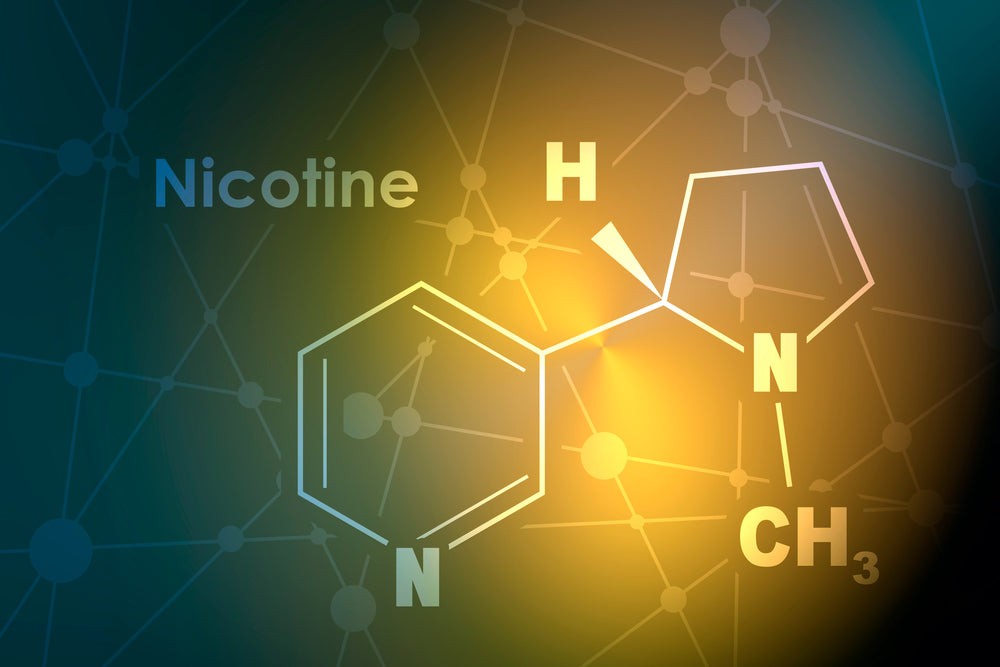There are people who react to nicotine or cigarette smoke with allergic symptoms. We would like to take a closer look at what nicotine allergy is all about and what symptoms it triggers. In addition, we want to introduce you to a few treatment options.
What exactly is nicotine?
Nicotine is a substance found in the tobacco plant. When nicotine-containing products are consumed, the substance reaches the brain via the bloodstream in a very short time and triggers a number of reactions. The tobacco effect is known to have a relaxing reaction on the body, as nicotine blocks certain processes that trigger nervousness.
At the same time, our adrenaline level is driven up with the intake of nicotine and blood pressure rises. For this reason, tobacco-containing products are very popular, especially among athletes, as they are said to have a performance-enhancing effect. To prevent nicotine poisoning, tobacco products should always be consumed in moderation.
What is a nicotine allergy?
Most people who react to cigarette smoke do not react directly to the nicotine it contains, but to other substances, such as flavourings or fragrances. A direct nicotine allergy is extremely rare and is more likely to occur when there is direct contact with the tobacco plant, such as among workers on tobacco plantations.
As a combustion process takes place during smoking, the allergenic effect of nicotine is reduced. Allergy sufferers react either to fragrances or also to the glue contained in cigarettes. If you are allergic to plasters, for example, this reaction can also be triggered by cigarettes.
What are typical nicotine allergy signs?
A nicotine allergy triggers symptoms that we already know from other allergies. These include: Irritated skin, pimples on the face and especially around the mouth, pustules, swelling in the mouth and throat, itchy skin and dermatitis.
Excessive use of nicotine can also cause other reactions in the body that are not triggered by the allergy. It drives up the heart rate, can cause nausea and headaches, and suppresses our appetite. Some people also react to the overdose with chills and cold sweats.
How is nicotine allergy treated?
If you experience an allergic reaction to cigarette smoke, you should see a doctor. He or she will carry out a series of allergy tests to determine the exact substance to which you are reacting. This usually involves applying drops of the fragrance to the skin and examining which ones cause skin irritation. The most effective treatment is, of course, to stop smoking or to switch to products that do not contain nicotine.
Snus products without nicotine
For people with a nicotine allergy or people who want to stop smoking, snus products without nicotine are suitable. If you have an allergy, you should check beforehand exactly which fragrances or flavours you react to, because snus varieties also contain flavours.
The Swiss brand edelsnus launched a product without nicotine. Edel CBD Mint contains cannabinoids and gives you the same feeling of lightheartedness as other nicotine-containing products. It tastes like fresh mint and belongs to the All White products.
Furthermore, there are now snus products that contain nicotine but no tobacco. This prevents discolouration of the teeth without losing the usual effect on body and mind. Among the top sellers are the brands Lyft, Velo and edelsnus. For example, VELO Mighty Peppermint AW has a nicotine content of 15.5 mg/g and VELO Crispy Peppermint AW has a nicotine content of 14 mg/g.
Conclusion
A nicotine allergy is not a reaction to the nicotine contained in tobacco, but rather to the fragrances or glues found in a cigarette. These can cause itching, skin irritation and breathing difficulties. In addition, an overdose of nicotine can also cause unpleasant after-effects. An allergy test by a doctor can determine exactly which substances you react to.




 Dieses Produkt schädigt Ihre Gesundheit und macht stark abhängig.
Dieses Produkt schädigt Ihre Gesundheit und macht stark abhängig.